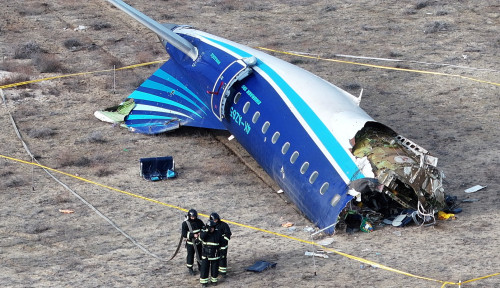
By Lisa Barrington, Shivansh Tiwary and Joanna Plucinska
NEW DELHI (Reuters) – Proliferating conflict zones are an increasing burden on airline operations and profitability, executives say, as carriers grapple with missiles and drones, airspace closures, location spoofing and the shoot-down of another passenger flight.
Airlines are racking up costs and losing market share from cancelled flights and expensive re-routings, often at short notice. The aviation industry, which prides itself on its safety performance, is investing more in data and security planning.
“Flight planning in this kind of environment is extremely difficult … The airline industry thrives on predictability, and the absence of this will always drive greater cost,” said Guy Murray, who leads aviation security at European carrier TUI Airline.
With increasing airspace closures around Russia and Ukraine, throughout the Middle East, between India and Pakistan and in parts of Africa, airlines are left with fewer route options.
“Compared to five years ago, more than half of the countries being overflown on a typical Europe-Asia flight would now need to be carefully reviewed before each flight,” said Mark Zee, founder of OPSGROUP, a membership-based organisation that shares flight risk information.
The Israeli-Palestinian conflict in the Middle East since October 2023 led to commercial aviation sharing the skies with short-notice barrages of drones and missiles across major flight paths – some of which were reportedly close enough to be seen by pilots and passengers.
Russian airports, including in Moscow, are now regularly shut down for brief periods due to drone activity, while interference with navigation systems, known as GPS spoofing or jamming, is surging around political fault lines worldwide.
When hostilities broke out between India and Pakistan last month, the neighbours blocked each other’s aircraft from their respective airspace.
“Airspace should not be used as a retaliatory tool, but it is,” Nick Careen, International Air Transport Association (IATA) senior vice president for operations, safety and security, told reporters at the airline body’s annual meeting in New Delhi on Tuesday.
Isidre Porqueras, chief operating officer at Indian carrier IndiGo, said the recent diversions were undoing efforts to reduce emissions and increase airline efficiencies.
WORST-CASE SCENARIO
Finances aside, civil aviation’s worst-case scenario is a plane being hit, accidentally or intentionally, by weaponry.
In December, an Azerbaijan Airlines flight crashed in Kazakhstan, killing 38 people. The plane was accidentally shot down by Russian air defences, according to Azerbaijan’s president and Reuters sources.
In October, a cargo plane was shot down in Sudan, killing five people.
Six commercial aircraft have been shot down, with three near-misses since 2001, according to aviation risk consultancy Osprey Flight Solutions.
Governments need to share information more effectively to keep civil aviation secure as conflict zones proliferate, IATA Director General Willie Walsh said this week.
Safety statistics used by the commercial aviation industry show a steady decline in accidents over the past two decades, but these do not include security-related incidents such as being hit by weaponry.
IATA said in February that accidents and incidents related to conflict zones were a top concern for aviation safety requiring urgent global coordination.
TOUGH CHOICES
Each airline decides where to travel based on a patchwork of government notices, security advisers, and information-sharing between carriers and states, leading to divergent policies.
The closure of Russian airspace to most Western carriers since the outbreak of war in Ukraine in 2022 put them at a cost disadvantage compared to airlines from places like China, India and the Middle East that continue to take shorter northern routes that need less fuel and fewer crew.
Shifting risk calculations mean Singapore Airlines’ flight SQ326 from Singapore to Amsterdam has used three different routes into Europe in just over a year, Flightradar24 tracking data shows.
When reciprocal missile and drone attacks broke out between Iran and Israel in April 2024, it started crossing previously avoided Afghanistan instead of Iran.
Last month, its route shifted again to avoid Pakistan’s airspace as conflict escalated between India and Pakistan. Flight SQ326 now reaches Europe via the Persian Gulf and Iraq. Singapore Airlines did not respond immediately to a request for comment.
Pilots and flight attendants are also worried about how the patchwork of shifting risk might impact their safety.
“IATA says airlines should decide if it’s safe to fly over conflict zones, not regulators. But history shows commercial pressures can cloud those decisions,” said Paul Reuter, vice president of the European Cockpit Association, which represents pilots.
Flight crew typically have the right to refuse a trip due to concerns about airspace, whether over weather or conflict zones, IATA security head Careen said.
“Most airlines, in fact, I would say the vast majority of them, do not want crew on an aircraft if they don’t feel comfortable flying,” he said.
(Reporting by Lisa Barrington in Seoul, Shivansh Tiwary in New Delhi, Joanna Plucinska in London; Additional reporting by Abhijith Ganapavaram in New Delhi; Editing by Jamie Freed)




